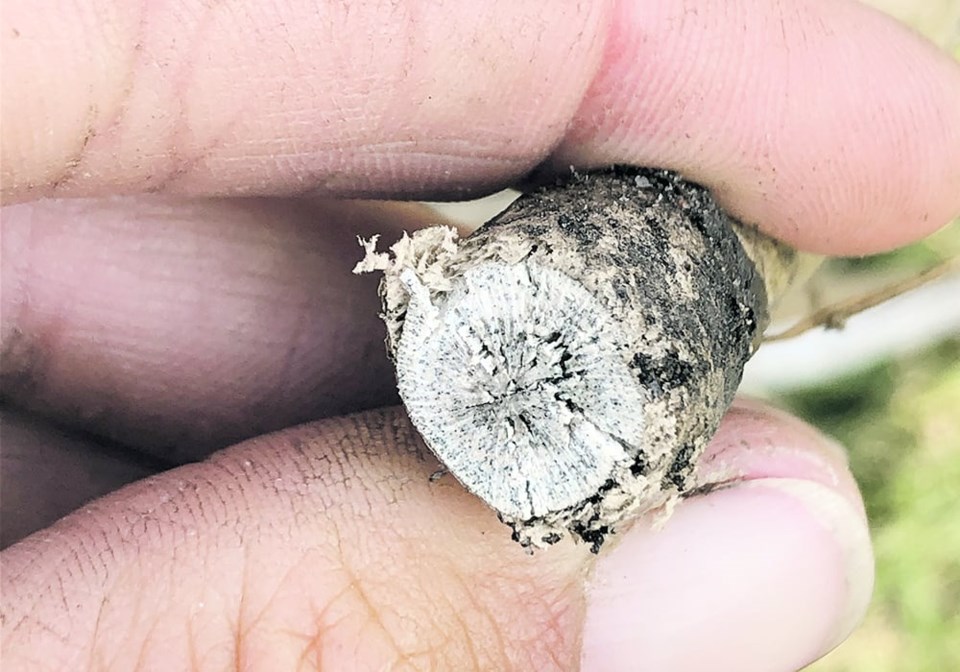WESTERN PRODUCER — Anecdotal evidence suggests that verticillium is moving north and west across Saskatchewan.
In 2022, Saskatchewan Agriculture staff discovered that verticillium stripe, a disease of canola, was commonplace in the eastern part of the province.
This fall, producers in other regions have found the disease in their canola.
“I’ve got verticillium in Davidson like you wouldn’t believe. I was checking yesterday,” said Rob Stone in late September. Davidson is located between Regina and Saskatoon.
“Verticillium is going to be something to watch for in canola.”
Kenton Possberg, who farms near Humboldt, also found verticillium in his fields this year.
“(It) was quite prevalent this year. What impact it had on yield, it’s something we need to put more research into.”
Verticillium stripe is a relatively new disease for canola growers in Western Canada. It was first discovered in 2014 near Winnipeg.
The fungus, Verticillium longisporum, infects canola and produces tiny, pepper-like sclerotia on or inside the stem of the plant. The sclerotia fall on the soil and into crop stubble after harvest. Then the small particles move with the wind and water to other locations. Farmers can also pick up the fungus on their boots and transport it to other fields.
The infection interferes with the uptake of water and nutrients. Symptoms include early ripening, plant stunting and leaf chlorosis, which is yellowing of the leaf tissue. The symptoms usually appear late in the growing season.
Plant disease experts are still trying to understand the impact on canola yields. However, results from Europe, on oilseed rape, suggest it can cause yield losses of 10 to 15 percent.
The disease has become a common problem in Manitoba. In 2022 about 40 percent of canola fields had verticillium, based on results from the provincial disease survey. This year that number declined to 25 percent.
Last fall, Saskatchewan’s plant disease specialist, Alireza Akhavan, found the disease in a surprising number of fields in eastern Saskatchewan.
“We got shocked because we only looked at 25 fields and 16 of those had verticillium, so 60 percent of those fields in that targeted survey,” he said last winter.
The disease and its symptoms can be confused with blackleg, another soil borne disease that’s well known to canola growers.
To help producers understand what they’re dealing with, SaskCanola started a testing program for verticillium and blackleg this year. It is asking growers to submit samples of canola stems that are possibly infected with one disease or both.
“The first 200 registered canola growers who apply are eligible for a free blackleg and verticillium stripe test, as only one sample is needed to test for both diseases,” says the SaskCanola website.
Kaeley Kindrachuk, the agronomy specialist with SaskCanola, said details of the testing protocols and how to submit samples are on the organization’s website under the Grower Resources tab.
“Growers can take stem samples and send those into the lab for confirmation,” she said. “SaskCanola gives out the code for the growers that phone in … and that’s how the lab knows how to (identify) that canola (sample).”
Kindrachuk said growers can submit samples until Oct. 27.
Bookmark SASKTODAY.ca, Saskatchewan's home page, at this link.




